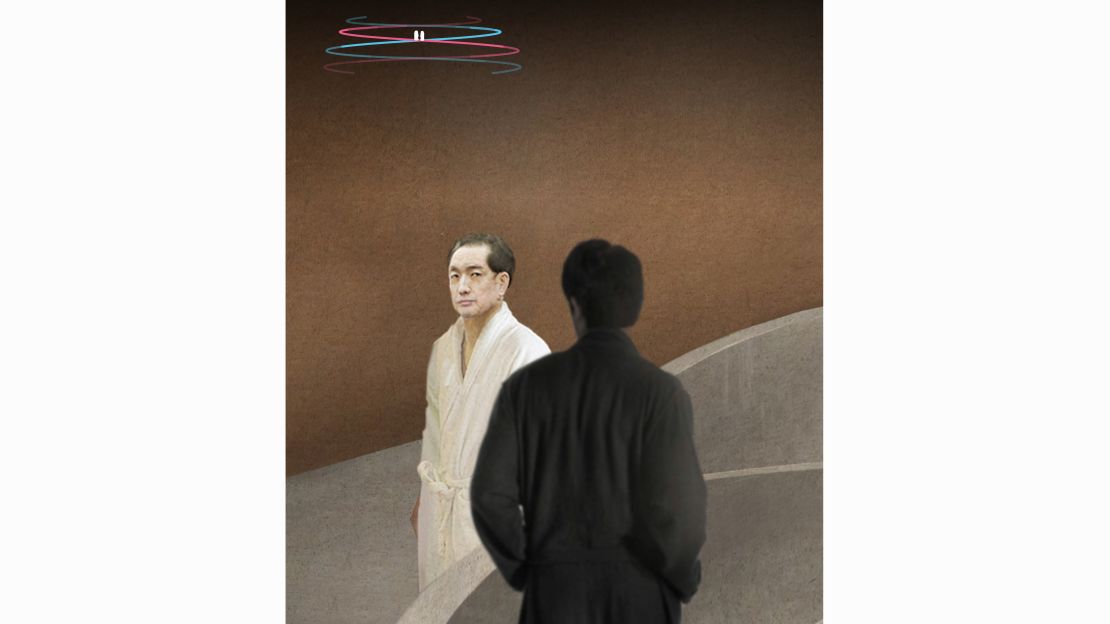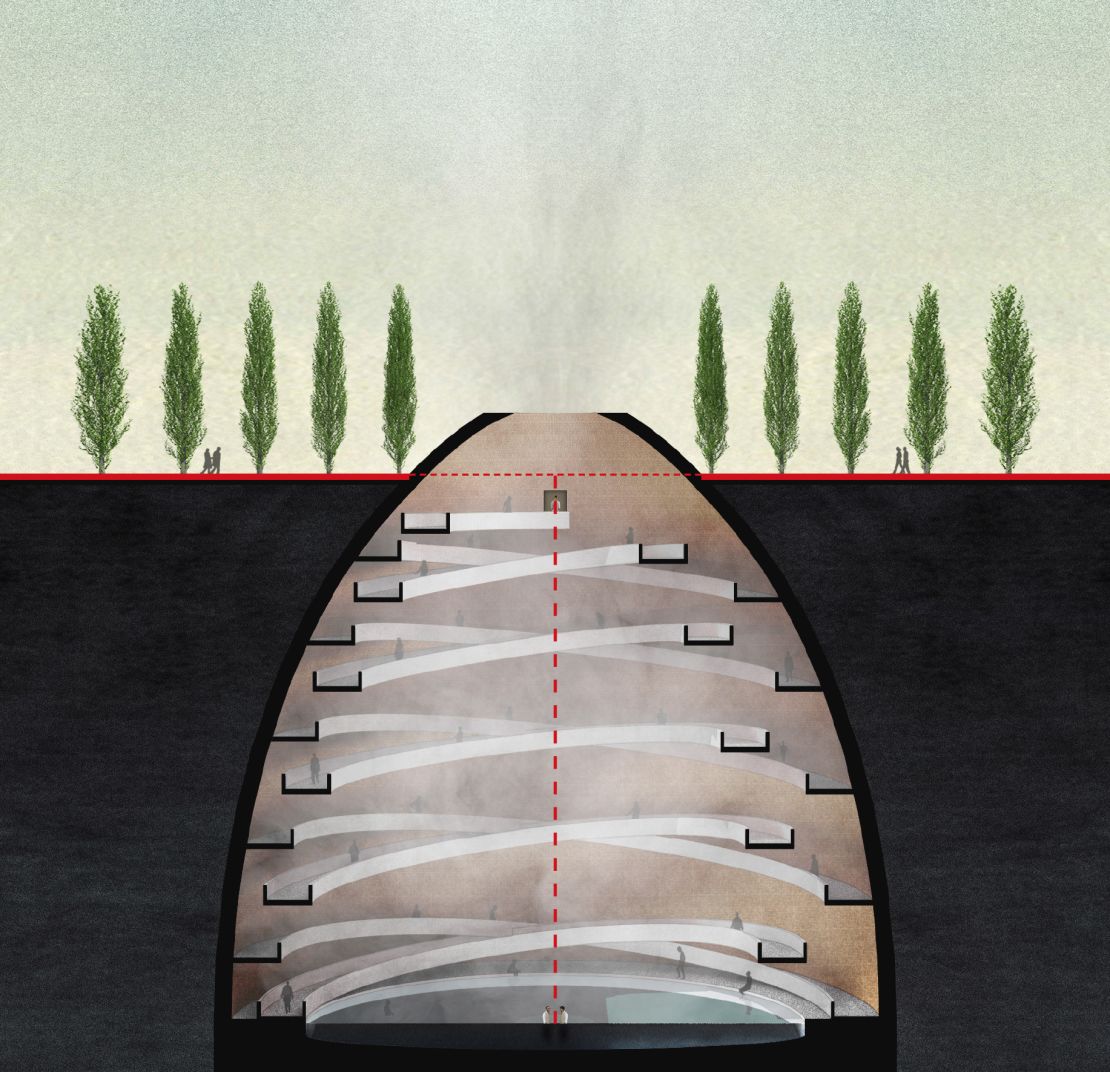Lined with barbed wire and armed soldiers, the demilitarized zone (DMZ) between North and South Korea is one of the most heavily guarded borders in the world.
But designers from around the world have envisaged a novel idea for easing tensions – a bathhouse where people from both sides can relax.
Korean public bathhouses have developed as a communal means for social interaction. In South Korea, they are popular weekend getaways for friends and family, and are furnished with the likes of hot tubs, traditional kiln saunas, massage tables, internet cafes and even karaoke rooms.
Research initiative Arch Out Loud challenged architects to design bathing facilities underneath the DMZ earlier this year. From an artificial cave to a complex maze, the competition received around 300 submissions.
The winning entry was a subterranean double helix-inspired bathhouse by New York-based Korean architects Kangil Ji of Studio LaM and Jinhyun Jun and Minkyung Song of STUDIO M.R.D.O. Named “Crossing Parallel(s),” the trio’s proposal is intended to act as a metaphor for the division of Korea.

Visitors from each side pass through checkpoints and changing rooms before encountering one other. They then turn in opposite directions as they walk down the layered ramps but are united in the communal pool in the bottom. CNN spoke to the winning designers about their proposed DMZ bathhouse.
CNN: Why a bathhouse? What significance do they carry in Korea?
Kangil Ji: Many public bathhouses in (South) Korea are used as a public living room where strangers take a bath, sleep and eat next to each other, wearing short pants and shirts.?It is a space without formal privacy and diplomacy.?Given this, I assume the competition considered ‘bathhouse’ as a symbolic space which intimate interaction and reunion between North and South Korea could occur not in a political sense, but in a very private sense.
CNN: Can you walk us through your bathhouse?
KJ: You can sequence our images into a narrative. The beginning of the (journey through the bathhouse) is supposedly the beginning of the division between North and South. Our design has a narrow tip and big bottom – the narrow tip represents a moment when North and South were close to each other. People from both sides approach the tip facing one another, but as they go underground they can’t see each other, so there is a feeling of division. As they go down and the space widens, they grow apart in distance but eventually meet again at the end.
CNN: What is the message behind your design?
KJ: We wanted to visualize the history of tension and relaxation between South and North Korea. The two Koreas have been divided for more than 60 years, and this unique setting has created the current border of the DMZ. We wanted to reconfigure that border to show how it was created and maintained throughout history.
Jinhyun Jun: I think the key point here is reflection, as the 38th parallel (the latitudinal line dividing Korea) makes people think about our past and present. Walking down the double helix ramp is intended to provide time to reflect on the history, rather than enforcing sudden unification.
CNN: In Korean societies, bathhouses have historically served as places for social interaction. How did this tradition influence your design?
JJ: The sauna is a social place, especially in Korean culture. We thought that placing that in the bottom (of the facility) could serve as a conclusion to our journey. We also wanted to design a physically interesting shape while reshaping the idea of boundary, as the boundary itself is non-physical and non-existent in real life.

CNN: If you could, how would you reimagine tourism at the DMZ?
KJ: Currently, the tourism industry of the DMZ focuses on showing the monumental history of the conflict (through activities like) observing symbolic military facilities in North Korea through binoculars. But I think a new paradigm of DMZ tourism should let people further experience the border and reveal hidden narratives in the area. Maybe people could visit natural habitats in the DMZ and nearby villages.
CNN: How did you approach the idea of a “border” in your design?
KJ: A lot of people living in North and South Korea don’t really know much about – or acknowledge the presence of – the border. But in our project, people can walk through the projected line of the 38th parallel. By creating a double helix ramp that connects both territories, we wanted to physicalize and lead people to experience a border that is only imaginative to many.
CNN: Can architecture play a role in reducing political tensions?
JJ: Architecture or design disciplines have a certain role in making people reflect on their history, past, culture, diversity and more. In addition to more practical reasons, a really important role of our discipline is that it makes people think about the unique historical situation that we are in.









